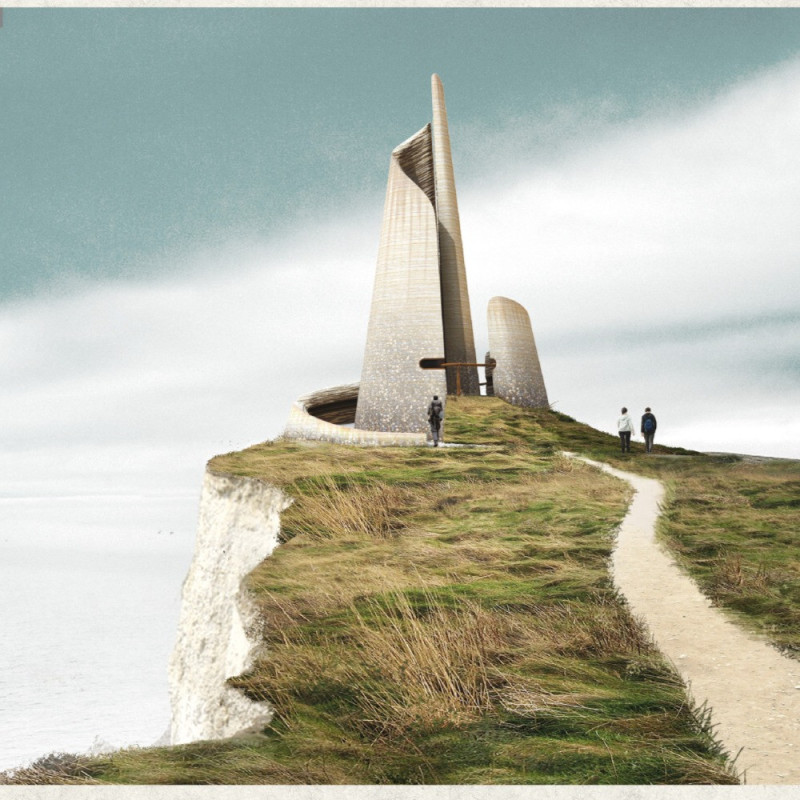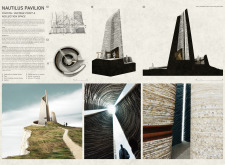5 key facts about this project
The Nautilus Pavilion is a permanent installation located along the Great British coastline. It serves as a Coastal Vantage Point and Reflection Space, providing a calm environment for visitors seeking solitude. Inspired by the shape of a nautilus shell, the design encourages an upward journey into a private inner area meant for reflection.
Form and Integration
The form of the pavilion features a conical shape that connects visually and physically with the coastal landscape. Thick sloping walls rise up from the earth, creating an image that aligns with its natural surroundings. Its shape can remind visitors of sandcastles or lighthouses, making it appear both familiar and at home in its environment.
Spatial Organization
The approach to the pavilion is characterized by its distinct silhouette, which breaks apart as light filters through vertical cuts in the walls. This design element creates a sense of intrigue, inviting visitors closer. The outer walls transition into a ramped entry passage that is welcoming and easy to navigate. A handrail emerges from the wall, helping guide movement and allowing a tactile interaction as one approaches the space.
Interior Experience
Inside the pavilion, three roughened walls create an enclosed atmosphere. These walls rise upward, leading the eye towards the top of the structure. Light streams in from above, highlighting the textures and surfaces, and creating a play of light and shadow. This interplay adds depth to the interior environment, enriching the experience of those who enter.
Materiality
Rammed earth is used for the walls, providing a robust and tactile quality that helps the pavilion feel enduring and connected to the landscape. This material emphasizes the bond between the building and its site. Additionally, corten steel is used for the handrail, adding reliability while providing a contrast to the earthen walls. This careful selection of materials reinforces the pavilion's role as a space for reflection, bringing together human design and nature.
Light streams through the interior, illuminating the textured walls and enhancing the feeling of tranquility, making it a special place for contemplation.



















































